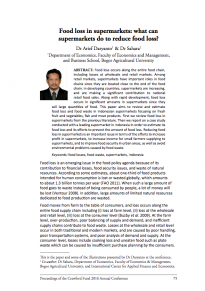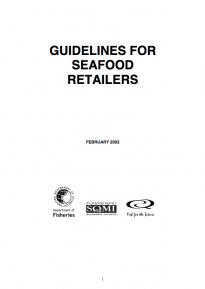Multiple Retailing
A significant proportion of fish and seafood is sold through large retailers in certain countries. In the UK, for example, 80% of seafood is sold through large retailers such as supermarkets. Some multiple retailers are vertically integrated and may own or have significant control over upstream supply chain activities, such as production and processing. Hence retailers can be able to influence food loss and waste (FLW) upstream as well as downstream at the consumer level. It is reasonable to assume that the majority of FLW will be fresh fish, as disposal of frozen and ambient products would be expected to be minimal due to the long shelf life of these products.
A UK study found the average figures for retail waste of 5% for fresh fish, 1% for frozen fish. This amounts to an estimated 6,800tpa of retail waste for the 17 fish species of interest to the study. Retail waste was defined as products that do not sell at full price and are therefore considered as a commercial waste to the retailer. This, however, does not necessarily reflect the amount of material that goes for final disposal. Most of the retail waste was said to be avoidable.
Key causes of FLW associated with large retailers include:
- Quality deterioration during chilling or cold storage
- Product reaches its “best before” date before it is sold
- Filleting and preparation of fish for customers
- Poor analysis of supply and demand leading to over purchase and inability to sell products
- Product damage, including damage to packaging
- Product outside specification or substandard quality
- Product incorrectly labelled
- Temperature rejection based on checking lorry and product temperature
It should be noted that fish waste from stores is frequently combined with meat waste for disposal.
Key Publications
Food Loss in Supermarkets: What Can Supermarkets do to Reduce Food Loss? This paper reviews and estimates food loss and food waste in Indonesian supermarkets focusing on fresh fruit and vegetables, fish and meat products. | |
Guidelines for Seafood Retailers This handbook offers assistance and guidance in the management of seafood safety and quality, with each module providing practical information and advice on how to ensure seafood safety and quality during all stages of retail distribution and sale. |
More Resources
More Resources
31 October 2023
09 April 2023













